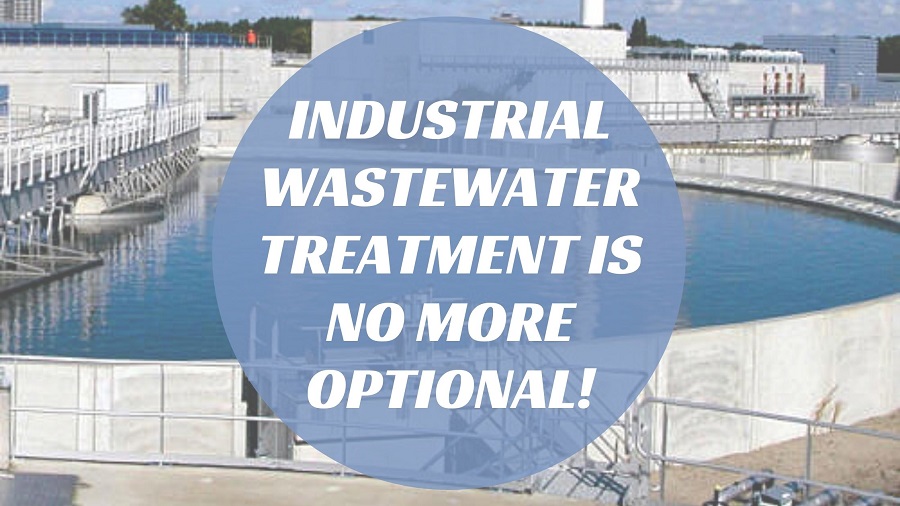Industrial Waste Water Treatment-- Improve Efficiency with Customized Water Treatment Solutions
Industrial Waste Water Treatment-- Improve Efficiency with Customized Water Treatment Solutions
Blog Article
Trick Strategies in Industrial Waste Water Therapy Processes
The treatment of commercial wastewater is an essential aspect of environmental management, involving a variety of methods created to reduce the influence of contaminants. Developments in modern technologies such as membrane layer purification and progressed oxidation processes offer innovative remedies for enhancing therapy effectiveness.
Physical Treatment Techniques
Just how properly can physical treatment approaches attend to the complexities of commercial wastewater? Physical treatment techniques play a critical function in the initial phases of wastewater monitoring, focusing mostly on the removal of solids and big particulates. Techniques such as flotation protection, filtering, and sedimentation are vital for lowering the concentration of suspended solids, thus boosting the effectiveness of subsequent treatment procedures.
Sedimentation involves the gravitational settling of solids, permitting for the separation of heavier products from the wastewater. This approach is especially reliable in clearing up water prior to chemical or organic treatments.
In addition, flotation approaches, which make use of air bubbles to raise suspended solids to the surface area for elimination, are efficient in dealing with wastewater with high focus of fats, oils, and greases. Overall, physical therapy approaches function as a vital very first step in the detailed monitoring of commercial wastewater, guaranteeing that the load on succeeding therapy stages is decreased and boosting general therapy effectiveness.
Chemical Treatment Strategies
While physical treatment methods lay the foundation for effective wastewater administration, chemical treatment methods are essential for dealing with the a lot more intricate contaminants typically located in commercial effluents. These methods utilize numerous chemical representatives to precipitate, reduce the effects of, or oxidize harmful compounds, ensuring a much more complete elimination of contaminants.
One usual technique is coagulation and flocculation, where chemical coagulants such as light weight aluminum sulfate or ferric chloride are contributed to promote the aggregation of suspended fragments. This procedure improves solid-liquid separation, decreasing turbidity and boosting water high quality. In addition, neutralization procedures are employed to change the pH of wastewater, making use of acids or bases to counteract acidic or alkaline streams, specifically.
Oxidation-reduction responses play an essential duty in derogatory natural pollutants and microorganisms. Chemical oxidants like chlorine, ozone, or hydrogen peroxide are made use of to damage down complex organic compounds, making them much less harmful or more naturally degradable. Advanced oxidation processes (AOPs) integrate several oxidation strategies to improve contaminant elimination performance.
Biological Therapy Procedures
The effectiveness of wastewater therapy is considerably improved by organic therapy procedures, which harness the all-natural metabolic activities of microorganisms to decay natural matter and get rid of pollutants. Industrial Waste Water Treatment. These processes mostly entail aerobic and anaerobic digestion, each customized for specific types of wastewater
Aerobic treatment procedures use oxygen to support microbial growth, advertising the break down of organic contaminants right into co2 and water. Common methods include turned on sludge systems, where aeration storage tanks promote the blending of wastewater with microbes, and flowing filters, which encourage biofilm advancement on media surface areas.
Alternatively, anaerobic therapy procedures occur in the lack of oxygen, using anaerobic bacteria to break down natural matter, causing biogas production, a renewable resource resource. Anaerobic digesters are frequently employed in commercial setups for this purpose, effectively reducing the volume of sludge while generating beneficial biogas.
The option of an organic therapy technique depends upon wastewater attributes, treatment objectives, and regulatory criteria. The integration of biological processes in wastewater treatment not just boosts contaminant removal effectiveness but likewise promotes sustainability by lessening chemical use and supporting resource recuperation.
Advanced Oxidation Processes

Typical AOP strategies include Fenton's ozonation, photocatalysis, and reagent. Fenton's reagent, a mix of hydrogen peroxide and ferrous iron, catalyzes the formation of hydroxyl radicals, making it effective for dealing with wastewater consisting of phenolic compounds and various other stubborn compounds.
AOPs use several benefits, including lowered sludge production and the capability to deal with wastewater with high concentrations of natural contaminants. The implementation of AOPs needs careful consideration of functional criteria and cost-effectiveness, ensuring that these sophisticated methods are suitably integrated into existing wastewater therapy systems.
Membrane Purification Technologies

Microfiltration works for eliminating suspended solids and bacteria, while ultrafiltration targets smaller sized natural molecules and viruses. Nanofiltration links the space between ultrafiltration and reverse osmosis, efficiently getting rid of divalent ions and natural substances. Reverse osmosis supplies the highest degree of purification, utilized largely for desalination and eliminating mono-valent ions.
Membrane layer innovations supply countless benefits, consisting of low energy intake compared to conventional therapy approaches, modular design for scalability, and the capacity for water recuperation and reuse. Difficulties such as membrane fouling and the need for regular maintenance should be dealt with to make certain system effectiveness. On the whole, membrane filtering technologies stand for a crucial part of modern industrial wastewater therapy techniques, promoting sustainability and source conservation in water management.
Conclusion
In final thought, commercial wastewater therapy utilizes a diverse variety of methods, consisting of physical, chemical, organic, view publisher site and advanced techniques. Proceeded improvements in these techniques will certainly further improve the effectiveness and effectiveness of wastewater therapy processes in commercial settings.
The treatment of commercial wastewater is a vital facet of environmental management, including a variety of techniques made to reduce the impact of impurities.Exactly how properly can physical treatment approaches resolve the complexities of industrial wastewater?Advanced oxidation procedures (AOPs) stand for an advanced strategy in commercial wastewater therapy, designed to efficiently deteriorate natural pollutants that are frequently resistant to traditional treatment approaches (Industrial Waste Water Treatment).In verdict, industrial wastewater treatment utilizes a varied variety of strategies, including physical, chemical, organic, and progressed techniques. Continued developments in these techniques will further Visit This Link improve the effectiveness and efficiency of wastewater treatment processes in commercial setups
Report this page